Digital Tools for Researchers
In today’s 21 century world, the use of emerging technologies is ever growing, from that in industries to academics and research. Digital tools and applications would assist academics and researchers with organising and analysing their research process, and make sense of the data being collected.
Below are some of the digital tools academics, Higher Degree Research (HDR) candidates, and researchers could use to organise and analyse their research data as well as help them visualise data and make sense of the data. I am familiar and used most of these tools during the course of my PhD candidature, or while providing computing skills training, HDR workshops and consultations at the Griffith University as an ICT Literacy Specialist.
- Digital tools for organising information and generating ideas
Coggle is an amazing digital tools to create non-linear, hierarchical representations of ideas, words or actions relating to a concepts for mind mapping. Users can access Coggle with a Google account. Multiple users can be invited to work on a single, collaborative mind map, or share them with friends and colleagues to enhance ideas collaboratively. The figure below is a concept map drawn using Coogle.
Padlet
Padlet is a virtual wall that allows people to express their thoughts on a common topic easily. Add content to brainstorming “wall”. This tool uses a storyboard technique to develop a project. It works like an online sheet of paper where people can put any content (e.g. images, videos, documents, text) anywhere on the page, together with anyone, from any device.
Google Docs
Google Docs is collaborative platform, online version of Word. Users can work in a single document with teammates or people outside their company. See edits as others type, communicate through built-in chat and ask questions through including comments. Google docs is one of the features of Google Apps freely available to users with Google/Gmail account. All the documents are automatically stored in Google drive.
2. Digital tools for capturing and bookmarking
Evernote
As one of the oldest of its kind, Evernote is a great tool to capture and bookmark web sites (web clipper) take notes, save audio and image files. The tool can be sync across multiple devices, which makes it handy to access information and notes from many devices including smartphones.
Google Keep
Google Keep is one of the latest features added to Google Apps. Users can add notes, lists, photos and audio with option to set pop-up reminder, and shared with other users. All the contents are stored in Google Drive. Google Keep a web based tool which can be synced with multiple devices and smart devices by installing Google Keep app.
Microsoft OneNote
OneNote is a free note-taking software provided by Microsoft, similar to Evernote in functionality. The main functions include capturing thoughts, ideas and to-do’s, and share with other Microsoft account users for viewing and editing. Users can also copy any web pages to OneNote for later view, snap photos or send them via email to their accounts@onenote to put these information into their notebook.
Wunderlist
Wunderlist is a cloud-based task organiser, similar to Google Keep. The tool can be synced with other devices. It allows users to share with other Wunderlist users.
Diigo
Did you ever miss a particular website or web-based article you read a few days ago? And now you realise that you are after that particular piece of information yet, don’t have a clue where it is? Well, Diigo is an easy-to-use tool that can help you to bookmark the web page and annotate if required. Diigo is a multi-tool for personal knowledge management. It can help to read more effectively with annotation tool, build personal library in the cloud, organise and share information as little or as much as you want. You can also tag webpages so that they are categorise into different tags for easy access.
Doodle
Despite sending repeated (email) calendar invitations, there was never easy way out to arrange a common time for a team meeting, where possibly include all the team members. Doodle can help to gather such information so that a suitable meeting time can be scheduled which suits most of the team members. Doodle is a free useful easy to use scheduling tool for quickly organising group meetings- use without creating an account- useful for people in and out of the university. Bookings can be synced with Google Calendar and others.
3. Tools for collecting quantitative information and data
LimeSurvey
LimeSurvey tool is a free, open-source survey platform that allows users to develop and publish surveys, and collect responses. A web link can be sent to participants via email. Although you don’t any programming knowledge, you do need a server to run the application.
Google Form
Google Forms is a free web tool provided by Google that allows users to create collaborative forms, surveys, and questionnaires. All the responses are stored automatically as Google Spreadsheets in Google Drive. Google form allows you to create and send surveys embed within an email. The recipient on Gmail or Google is able to fill out the form within the email. The completion rate would be significantly higher because it can save time and the recipients are time-poor and cannot be bothered.
Qualtrics
Qualtrics is online survey software that enables users to do many kinds of online data collection and analysis including market research, customer satisfaction, produce and concept testing, and other feedback. The user interface is awesome!
SurveyMonkey
SurveyMonkey is one of the oldest online survey platforms ever developed. SurveyMonkey is very easy to use and provides a wide pool of templates. The basic version is free but a paid version is also available for additional features or if need to collect responses from a huge population.
4. Digital tools for text mining, visualising and mapping
TextSTAT
TextSTAT (Simple Text Analysis Tool) is a simple programme written in Python for the analysis of texts. It reads plain text files (in different encodings) and HTML files (directly from the internet) and it produces word frequency lists, concordances and keywords in context from these files. It includes a web-spider which reads as many pages as you want from a particular website and puts them in a TextSTAT-corpus. TextSTAT also reads MS Word and OpenOffice files, no conversion needed, just add the files to the corpus and produce awesome testSTAT.
Netlytic is an amazing cloud-based text and social networks analyser that can automatically summarize and discover social networks from online conversations on social media sites. Netlytic can help to understand online conversations. The figure below illustrates analysis of Twitter tweets, using Netlytic tool.

Visual Understanding Environment (VUE)
Visual Understanding Environment (VUE)) is a concept mapping software that can integrate with multiple repositories to pull in, organize, and analyse data.

VUE provides a flexible visual environment for structuring, presenting and sharing digital information. It includes multiple features for advanced management of digital resources for teaching, learning, and research. VUE is an open source project based at Tufts University.
Google Fusion Tables
Google Fusion Tables is an experimental data visualization web application to gather, visualize and share data tables. It can filter and summarize across hundreds of thousands of rows (from excel or google spreadsheet) and create chart, map, network graph or custom layout. It is automatically stored in Google drive and can be shared with others for collaboration. 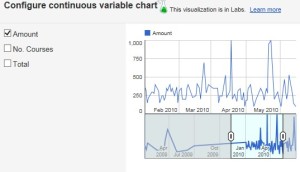
Orange is one of my favorite visualizing tools. It is an open source data visualization and analysis for data mining through visual programming or Python scripting. It includes components for machine learning; add-ons for bioinformatics and text mining. It also includes sample dataset and other features for data analytics.
Gephi
Gephi, my favorite visualizing tool, is an open source. It is interactive visualization and exploration platform for all kinds of networks and complex systems, dynamic and hierarchical graphs. It includes features to analyze networks manipulations in real time, reveal the underlying structures of association between objects in networks, create social data connections to map community organizations and networks, and create representing patterns of biological data. 
Gephi has been used in a number of research projects in academia, journalism and elsewhere, for instance in visualizing the global connectivity of New York Times content and examining Twitter network traffic during social unrest along with more traditional network analysis topics.
Bastian M., Heymann S., Jacomy M. (2009). Gephi: an open source software for exploring and manipulating networks. International AAAI Conference on Weblogs and Social Media. From AAAI.
Wordle is a simple online tool for generating “word clouds” from text. The clouds give greater prominence to words that appear more frequently in the source text.
CitNetExplorer is a software tool for visualizing and analyzing citation networks of scientific publications. The tool allows citation networks to be imported directly from the Web of Science database. Citation networks can be explored interactively, for instance by drilling down into a network and by identifying clusters of closely related publications.
5. Digital tools for referencing and bibliographies
EndNote
EndNote is an industry standard referencing software tool for publish and managing bibliographies, citations and references. Users can search online databases, collect full-text articles, synch and store library database online. EndNote can also help to create and generate citations and bibliographies in 6,000 plus styles. Most universities including Griffith University support and provide services on EndNote.
Mendeley
Mendeley is another popular free reference manager and PDF organizer, i.e., annotate and store PDF. It can be synced across PC, Mac, and mobile devices. Mendeley can generate citations and bibliography (compatible with MS Word, LibreOffice, BibTex), and publicly or privately share reading lists, references or full-text articles.
Zotero
Zotero is another free referencing tool. It is available as a browser plugins for Firefox, chrome, safari, or can be installed as Standalone Application. It can add PDFs, images, audio and video files, and snapshots of web pages, and automatically indexes the full-text content of the library, enabling users to find exactly what they are looking for with just a few keystrokes.
Note
The materials used in this blog are the revised and edited materials from the HDR workshop I have designed, developed and offered at the Griffith University.
How to cite:
Kinley, K. (2015). Digital tools for researchers. Retrieved from http://kkinley.com/digital-tools/
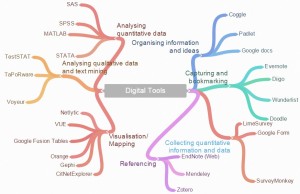
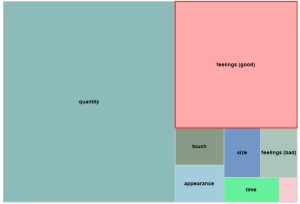
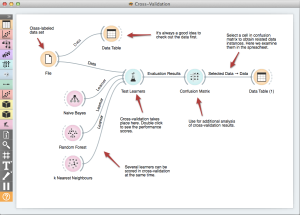
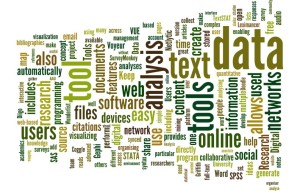
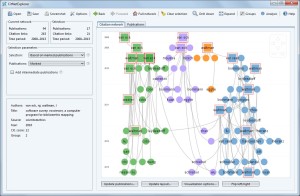
Very informative and potentially useful.
Thank you for your kind words.